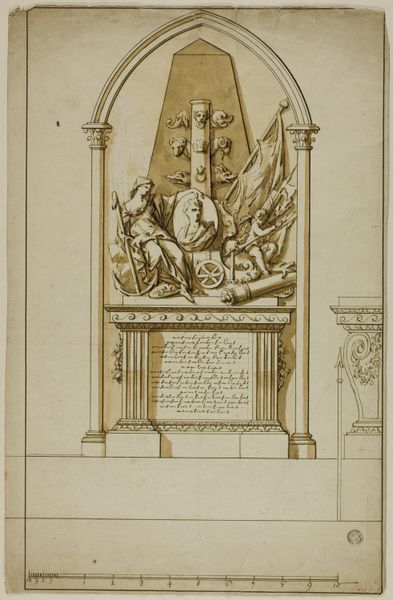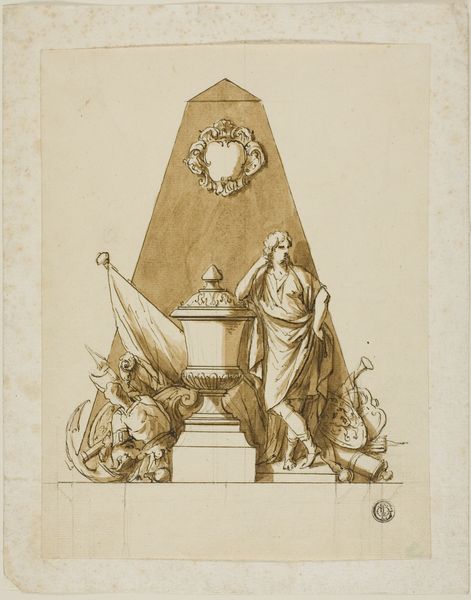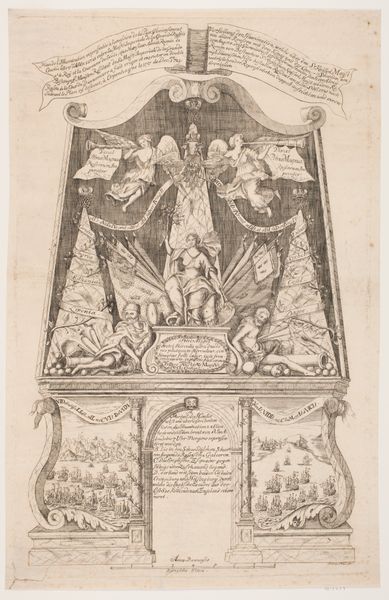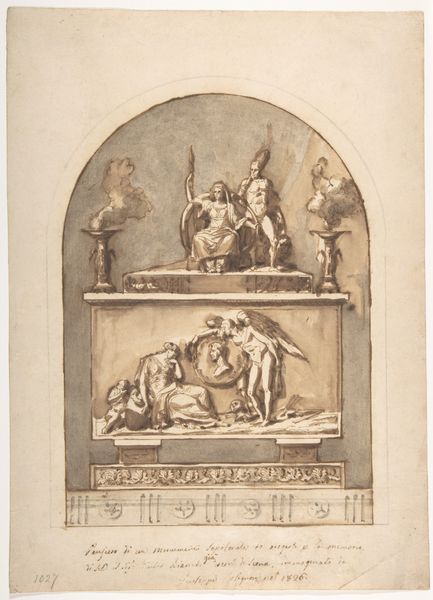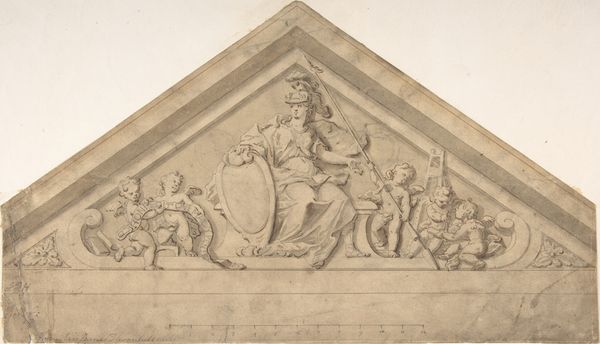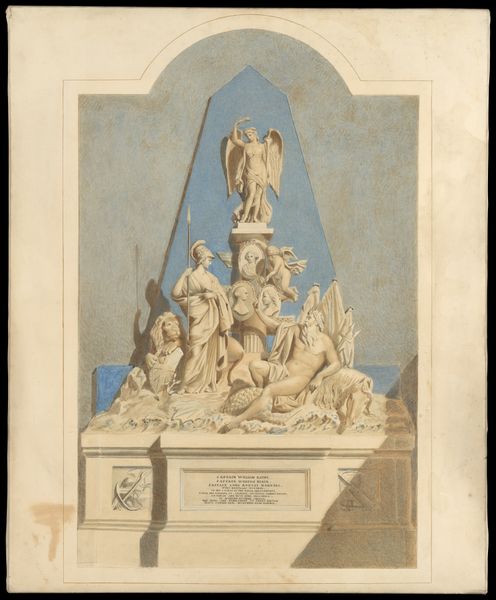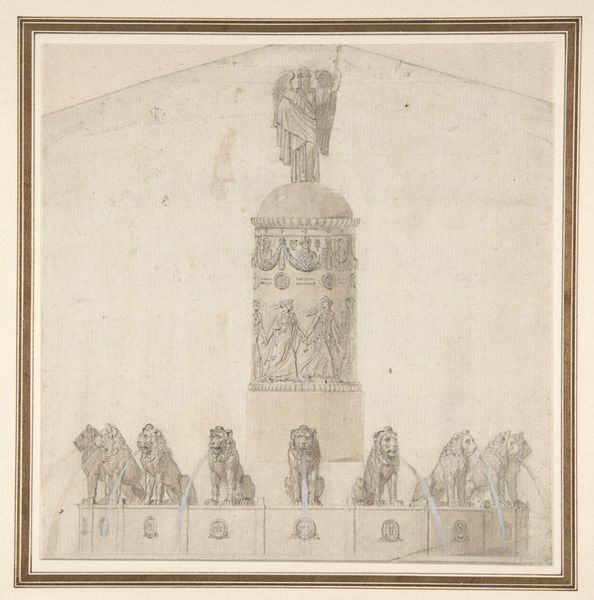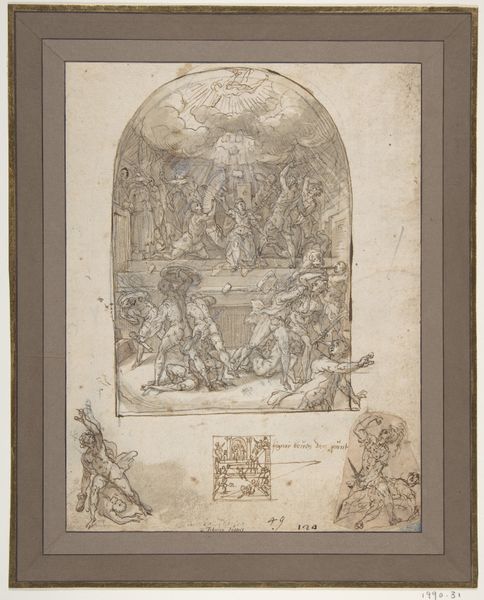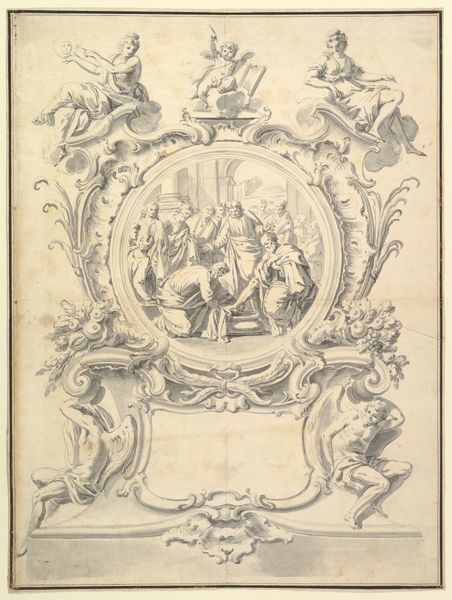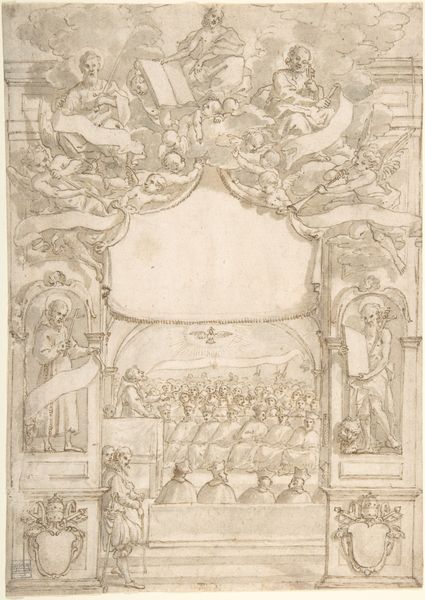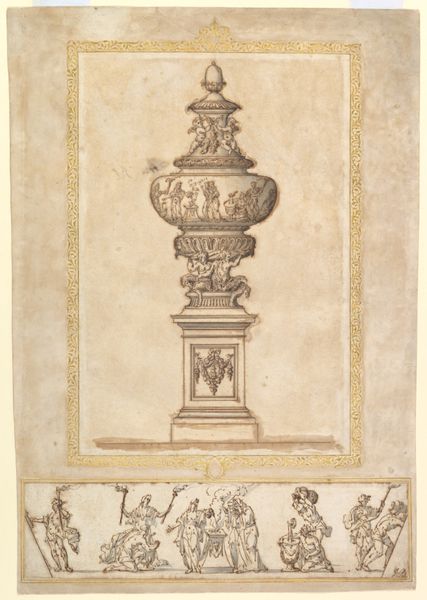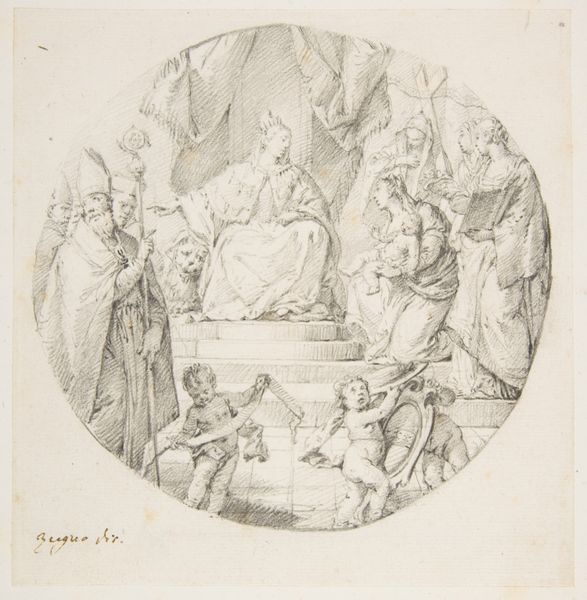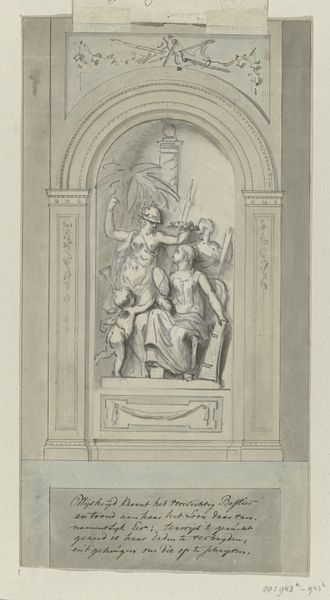
Unexecuted Design for the Monument to the First Duke of Marlborough c. 1733
0:00
0:00
Dimensions: 233 × 170 mm
Copyright: Public Domain
Editor: Here we have John Michael Rysbrack’s "Unexecuted Design for the Monument to the First Duke of Marlborough," dating to about 1733. It’s rendered in pen, ink, and graphite on paper. It strikes me as quite formal and structured, fitting of a monument design, yet something about it feels a little unrealized. What stands out to you when you look at this design? Curator: Formally, the composition demonstrates a clear hierarchy, a deliberate arrangement of elements to guide the viewer's eye. The triangular obelisk serves as a strong vertical anchor, visually stabilizing the dynamic figures below. Do you notice how the artist contrasts the static obelisk with the swirling forms of the figures and drapery? Editor: I do, especially with the central figure of the Duke himself. It looks like a calculated effort to present power. Curator: Precisely. Rysbrack employs line and wash techniques masterfully to create a sense of depth and volume. Observe how the hatching and cross-hatching define the musculature of the figures and the texture of the drapery. The limited color palette focuses attention on form and contour. Is the neoclassical aesthetic evident to you here? Editor: Yes, I see it now. The references to classical sculpture, the balanced composition, and the heroic subject matter... all suggest neoclassicism. Is that typical for monument design of this period? Curator: Indeed. The stylistic language aligns perfectly with the values of the time – order, reason, and a harking back to perceived golden ages of the past. What’s particularly interesting, perhaps, is to consider why this design remained unexecuted. Editor: I hadn't thought about that. Analyzing its structure has given me a totally new way of seeing it and an interesting point to keep digging at. Curator: And for me, your question encourages speculation on the vagaries of artistic patronage and taste in the 18th century, as embodied in its materiality.
Comments
No comments
Be the first to comment and join the conversation on the ultimate creative platform.
